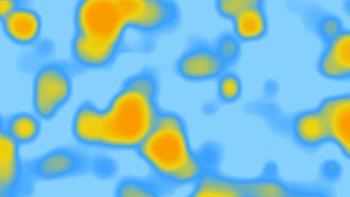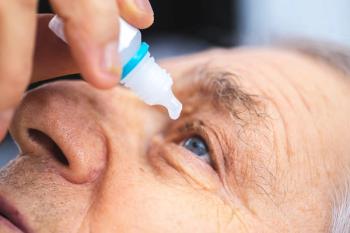
Researchers develop saline-powered, ultra-thin battery for smart contact lenses
Smart contact lenses can be used to correct vision, monitor the health of the user, and flag and treat diseases for patients diagnosed with chronic health conditions such as glaucoma and diabetes.
A team of researchers from Nanyang Technology University Singapore have developed a flexible battery as thin as a human
According to an NTU news release, smart contact lens offers the capability of displaying visible information on the cornea and can be used to access augmented reality. It can be used to correct vision, monitor the health of the user, and flag and treat diseases for patients diagnosed with chronic health conditions such as
Lee Seok Woo, PhD, from NTU’s School of Electrical and Electronic Engineering, led the development of the battery.
Woo said the research started with a simple question: Could contact lens batteries be recharged with human tears?
“There were similar examples for self-charging batteries, such as those for wearable technology that are powered by human perspiration,” he said. “However, previous techniques for lens batteries were not perfect as one side of the battery electrode was charged and the other was not.”
Woo said his team’s approach can charge both electrodes of a battery through a unique combination of enzymatic reaction and self-reduction reaction.
“Besides the charging mechanism, it relies on just glucose and water to generate electricity, both of which are safe to humans and would be less harmful to the environment when disposed, compared to conventional batteries,” he noted.
To make this science fiction idea science fact, a safe and suitable battery is required to power the smart contact lenses. Current rechargeable batteries rely on wires or induction coils that contain metal and are unsuitable for use in the human eye, as they are uncomfortable and present risks to the user.
The battery the NTU team developed includes biocompatible materials and doesn’t contain any wires or toxic heavy metals, such as those in lithium-ion batteries or wireless charging systems.
The battery features a glucose-based coating that reacts with the sodium and chloride ions in the saline solution that surrounds it, while the water the battery contains works as the ‘wire’ or ‘circuitry’ to generate electricity.1
According to the news release, the battery also could be powered by human tears, which contain sodium and potassium ions, at a lower concentration. The researchers tested the battery with a simulated tear solution, and were able to demonstrate that the battery’s life would be extended an additional hour for every twelve-hour wearing cycle it is used.
Co-first author Yun Jeonghun, a research fellow from NTU’s EEE, pointed out that the most common battery charging system for smart contact lenses requires metal electrodes in the lens, which are harmful if they are exposed to the naked human eye.2
“Another mode of powering lenses, induction charging, requires a coil to be in the lens to transmit power, much like wireless charging pad for a smartphone,” Jeonghun said in a news release. “Our tear-based battery eliminates the two potential concerns that these two methods pose, while also freeing up space for further innovation in the development smart contact lenses.”
The researchers noted that the battery can also be charged conventionally by an external power supply.
References:
An ultra-thin battery powered by saline for smart contact lenses. Corporate NTU. https://www.ntu.edu.sg/news/detail/an-ultra-thin-battery-powered-by-saline-for-smart-contact-lenses
NTU Singapore Scientists Invent Micrometres-Thin Battery Charged by Saline Solution That Could Power Smart Contact Lenses. https://www.ntu.edu.sg/docs/default-source/academic-services/ntu-singapore-scientists-invent-battery-charged-by-saline-solution-that-could-power-smart-contact-lenses.pdf?sfvrsn=86e14954_1
Newsletter
Want more insights like this? Subscribe to Optometry Times and get clinical pearls and practice tips delivered straight to your inbox.









































